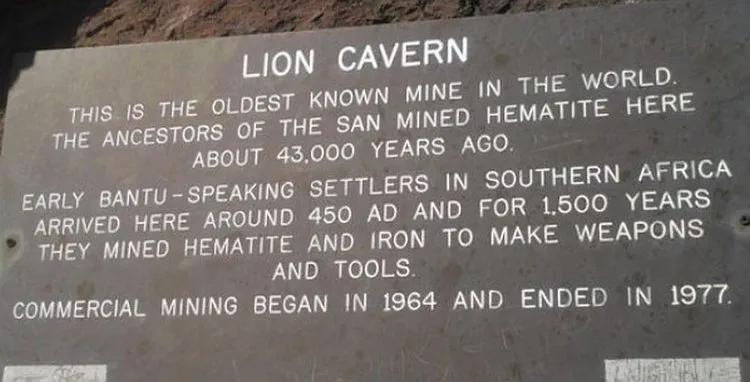
By Phumelele Mkhonta
JOHANNESBURG- The face of the Lubombo TFCA might get a lift!
This is because a team of archaeologists recently discovered a mining site estimated to be 48,000 years old at the Ngwenya Mines in the Kingdom of Eswatini.
Worth noting is that the Ngwenya Mine is along the Songimvelo-Malolotja TFCA- a subsidiary of the esteemed Lubombo TFCA.
TFCA is the acronym for Transfrontier Conservation Area- a concept where cross-border region whose different component areas have different forms of conservation status such as national parks, private game reserves, communal resource management and even hunting concession areas. Eswatini, together with South Africa and Mozambique, are in the Lubombo TFCA which covers a total area of 10 029 km².
Now aged between 43,000 and 48,000 years, Ngwenya Mine has been acknowledged to be one of the oldest mines in the world. The ongoing excavations on the site have recently proven that the mine might be 48,000 years old.

Oldest Mine in the World
Confirming this in a telephonic interview was Eswatini's renowned archaeologist and historian, Bob Forrester, who said currently, there was a team of four excavators who were on site exploring the Ngwenya Mine.
“We are in the process of discovering the wonders of the Ngwenya Mine, an exercise we started before COVID-19 emerged. There are many discoveries that we are yet to publish officially. “All I can confirm right now is that there is a new site that we are exploring that is 48,000 years old. This simply means that the mine might not be 43,000 years old as we had known all along (sic),” said Forrester.
According to articles compiled on the mine, the hematite ore deposit in the mine was used in the Middle Age Stone to extract red ochre, while in later times, the deposit was mined for melting and iron export.
When sought for comment, environmentalist and University of Eswatini (UNESWA) Head of Climate Change Centre Dr. Wisdom Dlamini said new discoveries and scientific findings could have an impact on various aspects, including the understanding of the natural and cultural heritage of an area like the Lubombo TFCA. Dr. Dlamini said such a discovery could potentially have several implications emerging information might impact the outlook on the Lubombo TFCA.“The discovery of an ancient site could provide valuable insights into the history and cultural heritage of the region. It could shed light on the early human presence in the area, ancient civilizations, their lifestyles, and their interactions with the environment. This newfound knowledge would contribute to a deeper understanding of the local heritage, potentially increasing the cultural significance of the Lubombo TFCA,” explained Dlamini. The environmentalist further alluded that significant archaeological discoveries often attracted attention from researchers, historians, and tourists.
“If the new site at Ngwenya Mines were to gain recognition for its historical importance, it could potentially boost tourism in the region. Increased tourism can bring economic benefits and opportunities for local communities. However, it would also require careful management to ensure the preservation of the site and avoid any negative impacts on the natural and cultural resources within the Lubombo TFCA.”

Ngwenya mine in Eswatini
Moreover, the Head of the Climate Change Centre at UNESWA expounded that such discoveries fostered research and collaboration. “Archaeological discoveries often lead to further research, collaboration, and scientific exploration. If the Ngwenya Mines site were found to be of exceptional value, it could attract the interest of archaeologists, anthropologists, and other researchers from around the world. This could foster international collaboration, knowledge sharing, and the development of research programs focused on the Lubombo TFCA. Such collaborations could enhance our understanding of the area's history, ecology, and conservation needs.
“The emergence of new information about the archaeology and history of the region may require the re-evaluation of conservation plans and strategies within the Lubombo TFCA. It could be necessary to incorporate measures to protect and manage the newly discovered site, ensuring that conservation efforts encompass both the natural and cultural aspects of the area. This might involve updating management plans, considering buffer zones, or implementing specific conservation measures to safeguard the archaeological site,” he explained.
In his parting remarks, Dlamini stated that it was important to note that the impact on the Lubombo TFCA would depend on the specific nature and significance of the archaeological discovery, as well as the actions taken by stakeholders involved in the conservation and management of the area.
The author is a journalist at the Climate Environment News in Eswatini





